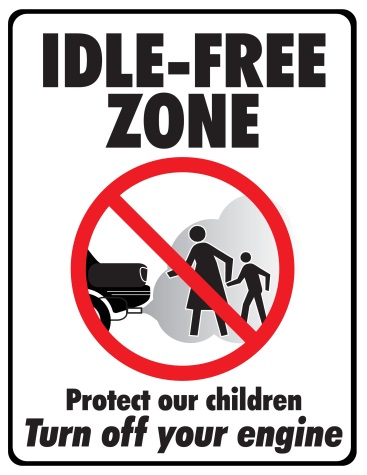About the SRTS Program
Air Quality and Health
Each year, automobiles emit millions of tons of pollutants into the air.
Air pollutants can be especially harmful to children because their respiratory systems are still developing.
- Air pollution can exacerbate chronic respiratory conditions, such as asthma.
- The increased rate of asthma in this country is alarming: Over the last 25 years, among children ages 5 to 14, there has been a 74 percent increase, and a 160 percent increase in children up to age 4.
- 14 million days of school are missed every year due to asthma.
Cars and buses idling around school entrances during pickup and drop off emit exhaust fumes that can be harmful to students.
Many communities have established “Idle Free Zones” outside of school entrances and exits. This ensures students do not have to walk through potentially harmful fumes and pollutants.

Photo courtesy of MARC
Schools today are often built on the edges of communities, making them too far for more kids to walk and bicycle compared to neighborhood schools.
Air quality is measurably better at schools placed in neighborhoods with integrated street and sidewalk networks, as these schools have more students arriving by bicycle and on foot.
Exposure to nature and time for free outdoor play can have multiple health benefits including stress reduction, relief of ADHD symptoms in children and increased cognitive and motor functioning.
Idle-free School Zone Toolkits are available at:
https://www.epa.gov/schools/idle-free-schools-toolkit-sample-idling-policies

